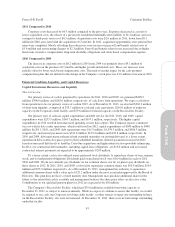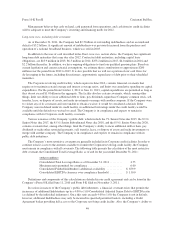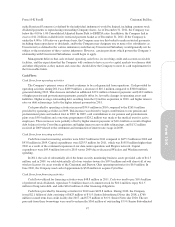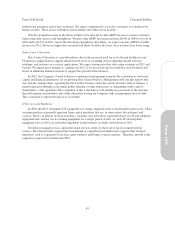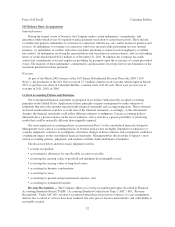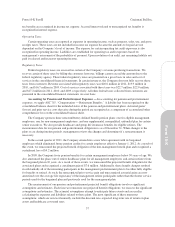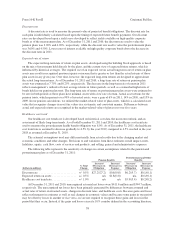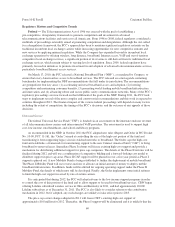Cincinnati Bell 2011 Annual Report Download - page 171
Download and view the complete annual report
Please find page 171 of the 2011 Cincinnati Bell annual report below. You can navigate through the pages in the report by either clicking on the pages listed below, or by using the keyword search tool below to find specific information within the annual report.
Form 10-K Part II Cincinnati Bell Inc.
With respect to arrangements with multiple deliverables, we determine whether more than one unit of
accounting exists in an arrangement. To the extent that the deliverables are separable into multiple units of
accounting, total consideration is allocated to the individual units of accounting based on their relative fair value,
determined by the price of each deliverable when it is regularly sold on a stand-alone basis. Revenue is
recognized for each unit of accounting as delivered, or as service is performed, depending on the nature of the
deliverable comprising the unit of accounting.
Wireline — Revenues from local telephone, special access, and internet product services, which are billed
monthly prior to performance of service, are not recognized upon billing or cash receipt but rather are deferred
until the service is provided. Long distance and switched access are billed monthly in arrears. Wireline bills
service revenue in regular monthly cycles, which are spread throughout the days of the month. As the last day of
each billing cycle rarely coincides with the end of the reporting period for usage-based services such as long
distance and switched access, we must estimate service revenues earned but not yet billed. Our estimates are
based upon historical usage, and we adjust these estimates during the period in which actual usage is
determinable, typically in the following reporting period.
Initial billings for Wireline service connection and activation are deferred and amortized into revenue on a
straight-line basis over the average customer life. The associated connection and activation costs, to the extent of
the upfront fees, are also deferred and amortized on a straight-line basis over the average customer life.
Pricing of local voice services is generally subject to oversight by both state and federal regulatory
commissions. Such regulation also covers services, competition, and other public policy issues. Various
regulatory rulings and interpretations could result in increases or decreases to revenue in future periods.
Wireless — Postpaid wireless and reciprocal compensation are billed monthly in arrears. Wireless bills
service revenue in regular monthly cycles, which are spread throughout the days of the month. As the last day of
each billing cycle rarely coincides with the end of the reporting period for usage-based services such as postpaid
wireless, we estimate service revenues earned but not yet billed. Our estimates are based upon historical usage,
and we adjust these estimates during the period in which actual usage is determinable, typically in the following
reporting period.
Revenue from prepaid wireless service, which is collected in advance, is not recognized upon billing or cash
receipt, but rather is deferred until the service is provided.
Wireless handset revenue and the related activation revenue are recognized when the products are delivered
to and accepted by the customer, as this is considered to be a separate earnings process from the sale of wireless
services. Wireless equipment costs are also recognized upon handset sale and are generally in excess of the
related handset and activation revenue.
Data Center Colocation — Data center colocation services consist primarily of recurring revenue streams
from rent of data center space, power, cabinets and cages. These recurring revenue streams are generally billed
monthly in advance and may have escalating payments over the term of the contract. In arrangements which
contain increasing or decreasing monthly billings, revenues are recognized on a straight-line basis over the
contract term, unless the pattern of service indicates otherwise. Power costs are billed to certain customers in
arrears based on actual usage. An estimate of this revenue is accrued monthly based on historical usage. Power
costs are presented on a gross basis in both revenues and cost of services in the accompanying financial
statements based upon the criteria in ASC 605.
Data center colocation services can also include revenues from non-recurring revenue streams.
Non-recurring revenue for services or products that are separate units of accounting are recognized as revenue
consistent with our accounting policy for arrangements with multiple deliverables presented above. Certain
non-recurring installation fees, although generally paid in lump sum upon installation, are not considered
separate units of accounting. Therefore, these revenues and their associated costs are deferred and recognized
ratably over the estimated term of the customer relationship, unless the pattern of service indicates otherwise.
53
Form 10-K




